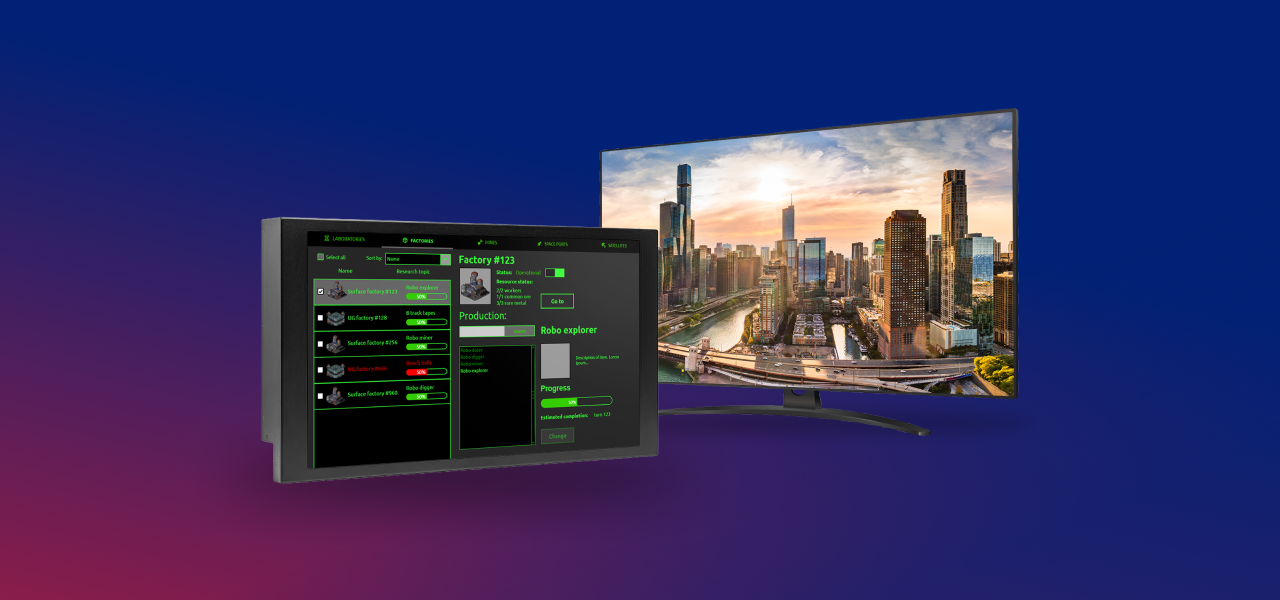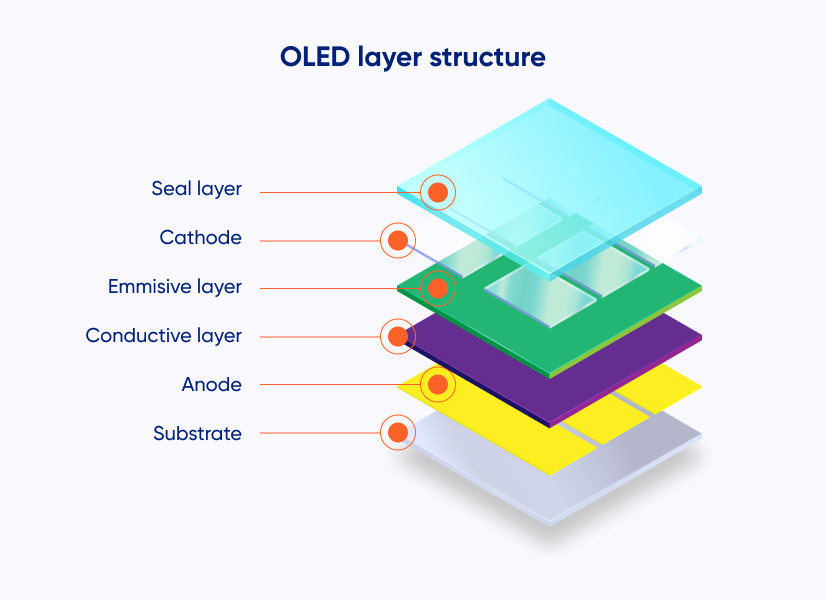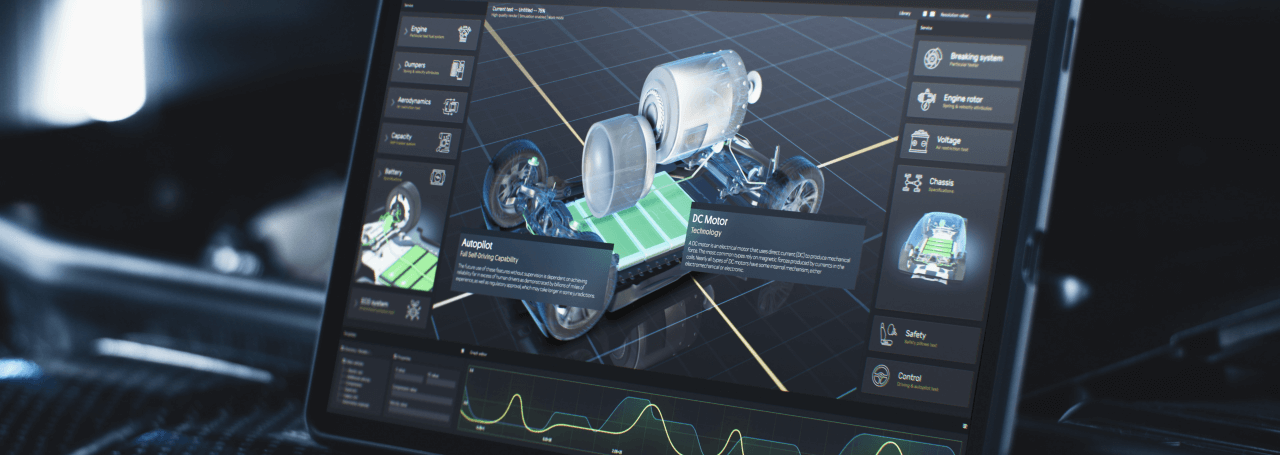When designing a device, the display is often the first thing users notice—and it sets the tone for the entire experience. Choosing between IPS and OLED is more than a question of brightness or color; it’s about performance, durability, and how the product will function in real-world conditions. In this article, we break down the differences between IPS and OLED displays, helping engineers and designers make informed decisions that balance visual quality, power efficiency, and long-term reliability.
Introduction to IPS and OLED display technologies
When choosing a display for a device, the debate often comes down to IPS vs OLED. Both technologies deliver sharp, modern visuals, but the way they generate images—and the trade-offs involved—are very different. Knowing the differences helps engineers, product managers, and designers make the right decision for performance, reliability, and user experience.
What is an IPS display?
IPS (In-Plane Switching) is a type of LCD technology. The “in-plane” part describes how the liquid crystals move: instead of tilting up and down like in cheaper TN panels, IPS crystals rotate parallel to the glass. This keeps colors and brightness consistent even when you view the screen from an angle.
IPS displays rely on a backlight. That means they can’t achieve “true black,” but they excel at stable color reproduction, high brightness, and wide viewing angles. You’ll see IPS widely used in medical monitors, industrial HMIs, tablets, and anywhere long operating life and consistent image quality are important.
What Is an OLED display?
OLED (Organic Light Emitting Diode) is a completely different technology. Each pixel is made from organic material that emits its own light when powered. No backlight is needed—which means thinner modules, deep blacks, and very high contrast.
Because each pixel can switch on and off individually, OLED offers near-instant response times and sharp visual detail. It’s especially strong in products where dynamic visuals, sleek form factors, or energy efficiency on darker content are key. Smartphones, wearables, and high-end consumer electronics are typical examples.
Key feature comparison of IPS and OLED displays
| Feature | IPS Display | OLED Display | Notes / Practical Tip |
| Brightness | Higher maximum brightness | Lower peak brightness | IPS is better outdoors or in bright ambient light. |
| Color Accuracy | Stable and precise | Vivid but may drift over time | IPS preferred for medical, industrial, or color-critical applications. |
| Contrast & Black Levels | Good, limited by backlight | True blacks, very high contrast | OLED excels for visual depth and dynamic content. |
| Response Time | Fast but slower than OLED | Very fast | OLED ideal for video, animations, or interactive interfaces. |
| Power Consumption | Steady, due to constant backlight | Lower on dark content, higher on bright/full-color | Consider OLED for dark themes; IPS more predictable for always-on displays. |
| Lifespan | Longer operational life | Moderate, risk of burn-in | IPS better for static or long-duration displays. |
| Sizes & Resolutions | Wide range from small to very large; higher resolutions | Mostly small to medium formats | IPS allows more flexibility for large or high-res panels. |
| Durability | Reliable but may need added protection | Mechanically simpler, often more robust | OLED simpler to integrate, IPS may need bezel or extra reinforcement. |
Practical applications of IPS and OLED displays
When to choose IPS displays
IPS is the right choice when:
- The display must stay readable in bright light or outdoors.
- Color accuracy is a priority (medical, industrial, graphics).
- The device runs long hours or displays static content (no risk of burn-in).
- You need larger screen sizes or higher resolutions.
In short, IPS gives a dependable, long-term solution where stability and clarity matter more than visual drama.
When to choose OLED displays
OLED is the best fit when:
- You need deep contrast, vivid visuals, and sharp detail.
- The product design requires a thin, lightweight display.
- Fast response time is important (dynamic interfaces, video, animations).
- The device spends time on dark interfaces where OLED saves power.
OLED shines in consumer-facing, style-driven products—where the “wow” factor of contrast and slim design carries weight.
Display integration and customization for your product
Beyond performance specs, integration is often the real challenge. IPS and OLED modules come in different mechanical formats—glass-only, with PCBs, or with built-in interfaces. Choosing the right one depends on:
- Mounting method. Will the display sit behind a bezel, or do you need a PCB with mounting holes for easy assembly?
- Interface options. HDMI, LVDS, MIPI, SPI—different technologies suit different system architectures.
- Environmental factors. Temperature ranges, humidity, and vibration resistance may push the choice toward IPS with protective design, or toward OLED for simplicity.
- Customization needs. Cover glass, touchscreens, optical bonding, or custom shapes can all be tailored to fit the end product.
Working with the display manufacturer early in the design cycle helps avoid costly redesigns and ensures the chosen technology integrates smoothly.
Summary
IPS and OLED displays both deliver excellent image quality—but for different reasons. IPS brings stability, accuracy, and range of formats. OLED offers contrast, speed, and sleekness. The best choice depends on how the product will be used, where it will operate, and what the user expects from the visual experience..
Our engineering team is ready to help you choose the right display for your product. Reach out today to discuss specifications, integration options, or custom solutions. Contact our team..
DISCOVER OUR
Whitepaper
Achieve the perfect user-display interaction with the right Touch Sensor IC. Ever faced issues with phantom touch events or certification? Boost your R&D like a pro with our Whitepaper!





